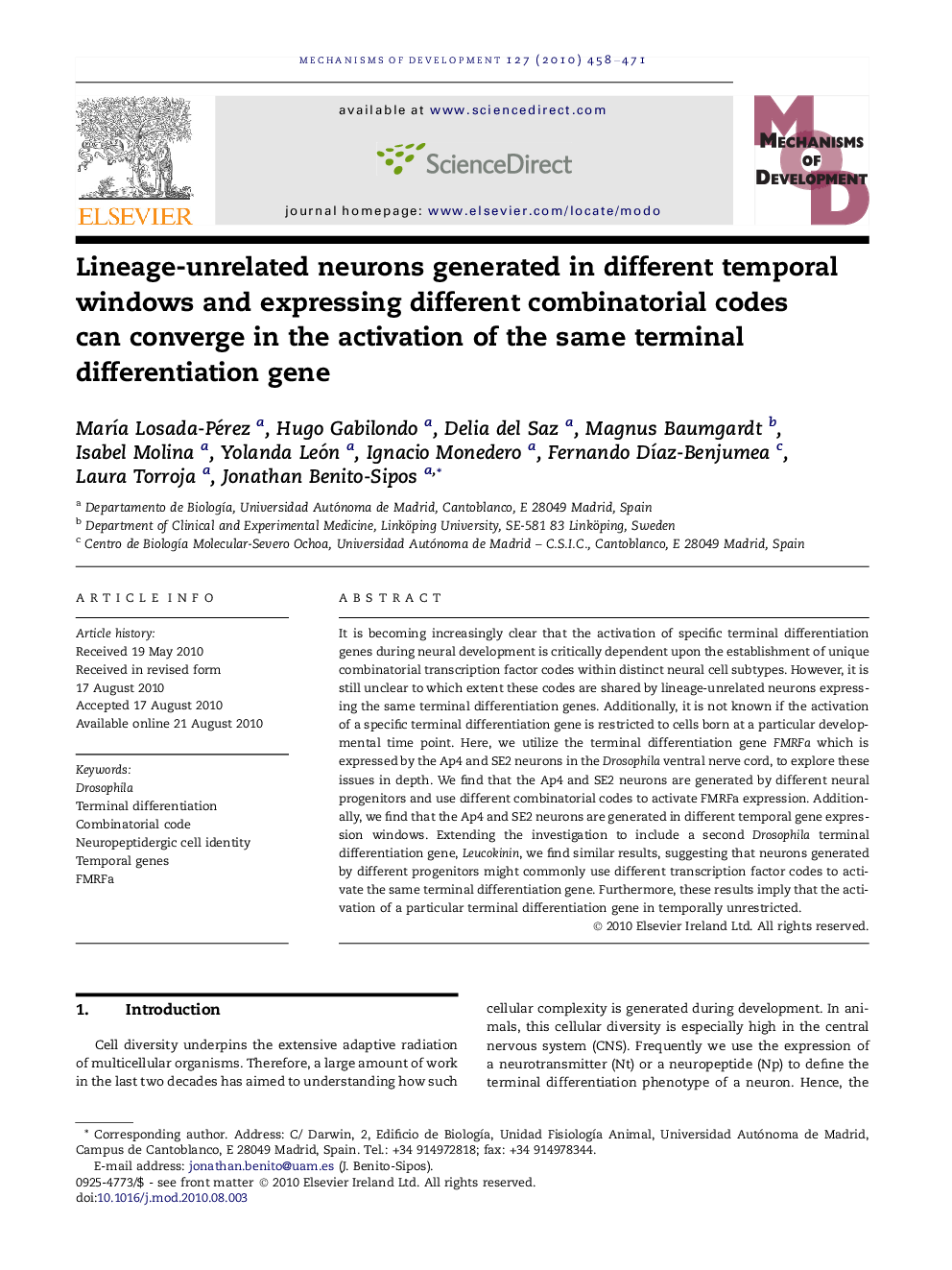| Article ID | Journal | Published Year | Pages | File Type |
|---|---|---|---|---|
| 2194655 | Mechanisms of Development | 2010 | 14 Pages |
It is becoming increasingly clear that the activation of specific terminal differentiation genes during neural development is critically dependent upon the establishment of unique combinatorial transcription factor codes within distinct neural cell subtypes. However, it is still unclear to which extent these codes are shared by lineage-unrelated neurons expressing the same terminal differentiation genes. Additionally, it is not known if the activation of a specific terminal differentiation gene is restricted to cells born at a particular developmental time point. Here, we utilize the terminal differentiation gene FMRFa which is expressed by the Ap4 and SE2 neurons in the Drosophila ventral nerve cord, to explore these issues in depth. We find that the Ap4 and SE2 neurons are generated by different neural progenitors and use different combinatorial codes to activate FMRFa expression. Additionally, we find that the Ap4 and SE2 neurons are generated in different temporal gene expression windows. Extending the investigation to include a second Drosophila terminal differentiation gene, Leucokinin, we find similar results, suggesting that neurons generated by different progenitors might commonly use different transcription factor codes to activate the same terminal differentiation gene. Furthermore, these results imply that the activation of a particular terminal differentiation gene in temporally unrestricted.
